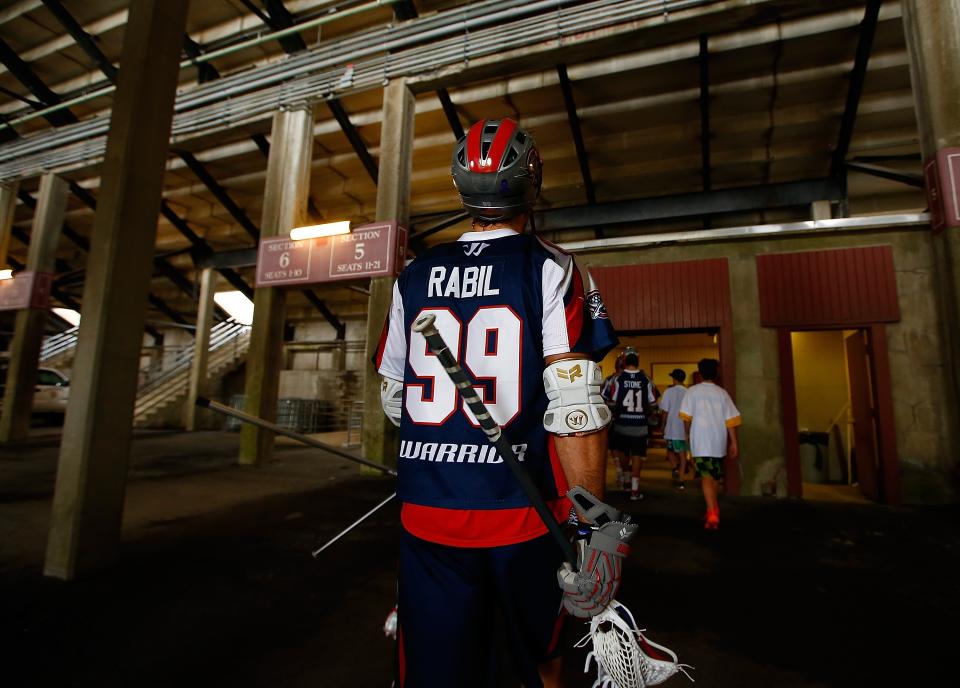The world's top lacrosse player gives his recipe for athletes in business
You may not know the name Paul Rabil, but in the lacrosse world he is a god, worshiped by high school and college players across the country.
This weekend, Rabil, who plays for the New York Lizards, will appear in his ninth Major League Lacrosse All-Star Game in nine seasons; on the side, he has made seed investments in sports tech startups like Whistle Sports.

Here’s one example of Rabil’s influence outside of his own sport: Bill Belichick, head coach of the New England Patriots, rarely gives media interviews apart from required NFL press conferences. But in May, he appeared on Suiting Up, Rabil’s new podcast, and spoke candidly about topics like cutting players.
Belichick is a passionate lacrosse fan who has called Rabil “the face of lacrosse.” But lest anyone think that’s the only reason Rabil was able to score the stern coach as a guest, his next two guests were Matt Hasselbeck and Venus Williams. Rabil describes the podcast as “exploring the duality of the modern professional athlete.”
How the modern pro athlete can succeed in business
Rabil, 31, is a pretty compelling example of the modern pro athlete: the single biggest star in a very small pro sport, and the only one to have built a lucrative career off the back of his lacrosse stardom.
In addition to tech investments through Rabil Ventures, he launched Paul Rabil Experience, an over-the-top video subscription platform with lacrosse tutorials and other content. (For a quick lesson he gave to Yahoo Finance, see the video below.)
Last year, he sold Paul Rabil Experience to Denver-based TopYa (formerly called TalentKode). His corporate sponsors include New Balance, Red Bull and GoPro.
So, what’s his advice for other pro athletes to earn off the field or court?
Leverage your existing fans using social media, bring new fans to the sport through good tech, and make investment decisions outside of sports based on your expertise.
That sounds almost simple. “There’s more opportunity for players, while they’re still playing, to leverage an audience that they’ve built,” he says. (His own following is 374,000 across Instagram, Facebook, and Twitter.) Athletes also have the luxury, he adds, of “connectivity with a customer that brands want to pay for, and then being liquid enough to invest or operate.”
Rabil’s role models for athletes in business are Roger Staubach and Joe Montana—he calls them “the OGs”—but clarifies that the model has changed. In the past, athletes like Staubach and Montana (and Gary Player, George Foreman, Cal Ripken) mostly transitioned to business after they were firmly done with pro sports. These days, athletes like the Williams sisters, NBA star Jeremy Lin, and Golden State Warriors player Steph Curry are getting into startups while they’re still playing their sport—and doing a lot more than investing, often taking an active role in a new business in exchange for an equity stake.
Rabil points specifically to the Golden State Warriors as an example. “What we’re seeing [in the Warriors] are business owners operating, and extending a hand to some of their players to help them bridge before retirement.”
How to grow pro lacrosse
Many sports fans have no idea that Major League Lacrosse exists, even though the sport is growing like a weed at the youth level. The season runs from April to August, and the players earn, on average, less than $15,000 per season in salary, so most have additional jobs. (“Nobody is making a killing at it, and it’s a grind for everybody,” pro laxer Mike Stone told Fortune in 2012.) MLL as a league is profitable, but the individual teams are not.
Rabil has a prescription for how MLL can grow more: start with the tech, and then the athletes need to drive fans to it themselves. MLL partnered up with Twitter this year to live-stream one game per week on Twitter—a step Rabil praises—and all MLL games go on Lax Sports Network, an OTT subscription service. But Rabil acknowledges that platform serves “the more niche, hardcore fan.”
To reach mainstream sports fans, Rabil says MLL needs to “offer games where eyeballs already are, where the daily actives and monthly actives are—and to me that’s Facebook… and then creating meaningful, original content, and that’s up to players like myself.”
—
Daniel Roberts is the sports business writer at Yahoo Finance. Follow him on Twitter at @readDanwrite. Sportsbook is our sports business video series.
Read more:
David Ortiz: ‘It’s so easy to blow money’
Derek Jeter and the new playbook for athlete investing
How NFL star Luke Kuechly is growing his business off the field
George Foreman III is taking his boxing gym national
Corporate America is drooling over these 2 long-haired Mets pitchers


